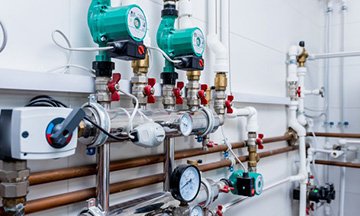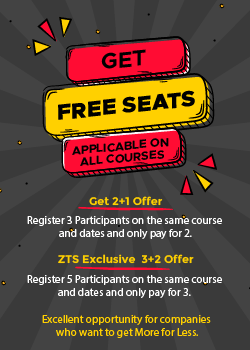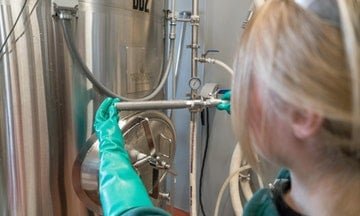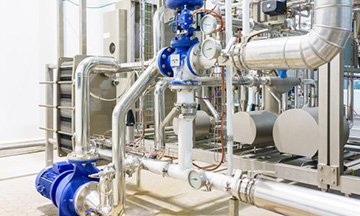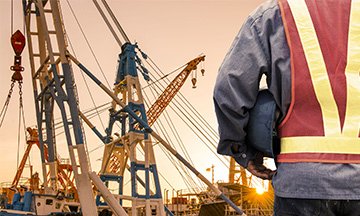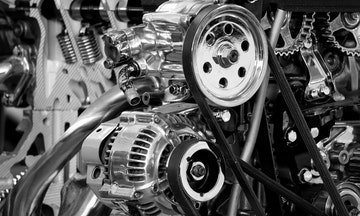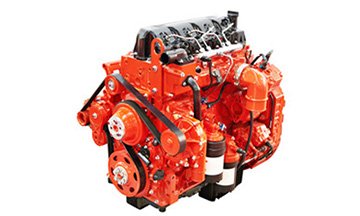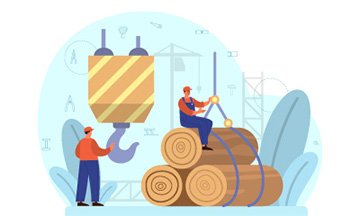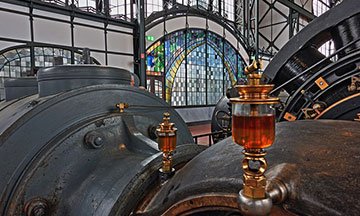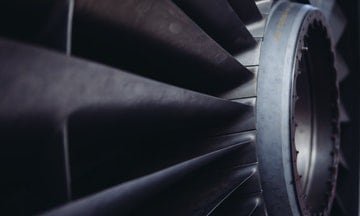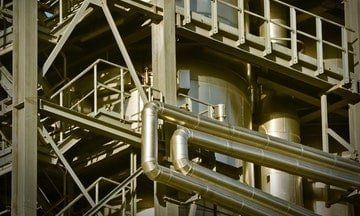Compressors, Pumps and Turbines
| Date | Venue | Duration | Fees | |
|---|---|---|---|---|
| 27 May - 07 Jun, 2024 | Kuala Lumpur | 10 Days | $9375 | Register |
| 27 May - 31 May, 2024 | Dubai | 5 Days | $4750 | Register |
| 17 Jun - 21 Jun, 2024 | Dubai | 5 Days | $4750 | Register |
| 29 Jul - 02 Aug, 2024 | Dubai | 5 Days | $4750 | Register |
| 12 Aug - 16 Aug, 2024 | Dubai | 5 Days | $4750 | Register |
| 26 Aug - 30 Aug, 2024 | Nairobi | 5 Days | $4950 | Register |
| 02 Sep - 06 Sep, 2024 | Dubai | 5 Days | $4750 | Register |
| 28 Oct - 01 Nov, 2024 | Dubai | 5 Days | $4750 | Register |
| 25 Nov - 13 Dec, 2024 | Seoul | 15 Days | $14200 | Register |
| 25 Nov - 29 Nov, 2024 | Dubai | 5 Days | $4750 | Register |
| 16 Dec - 20 Dec, 2024 | Dubai | 5 Days | $4750 | Register |
Course Overview
Oil and Gas treatment processes and procedures need specialized equipment to provide the energy to move large quantities of liquids and gases through piping and pipelines designed for those purposes. This movement begins from the oil and gas fields through refining and processing plants, and onwards to the storage and sales points. The equipment used to move the fluids is called rotating equipment. These types of equipment are used significantly and provide an increase in pressure for both liquid and gas streams to enable the passage of fluids to the required destination.
This Zoe training course will introduce delegates to various types of compressors, pumps, turbines and their associated equipment, such as bearings, seals, filters, etc. This training course will also develop the technical knowledge of the operation and maintenance staff to build their confidence level in start-up, follow-up, shut down and troubleshooting.
The course defines and describes the systems and subsystems that form the turbine, the potential problems with these systems and subsystems, monitoring techniques for early detection of problems, and methods to analyse and examine the monitored variables to detect potential problems.
Course Objectives
Upon completing this Compressors, Pumps and Turbines course, participants will be empowered to:
- Know the principles of compressor, pumps and gas turbine theory of operations
- Recognize different types of pumps, compressors and gas turbines
- Explain the functions and principles of operation of each major component of these machines and systems components
- Learn how to measure and control the performance and efficiency of these machines
- Understand and learn the principles of pump, compressor and gas turbine start-up procedures and introduce standard operating procedures for the package
Training Methodology
The Compressors, Pumps and Turbines training course will employ a variety of proven and verified learning techniques to ensure maximum understanding, comprehension and retention of the information presented. This includes lectures, presentations with active delegate participation including discussions, real-life problems and case studies.
Through an active participation in the group work and class discussions, the delegates will get adequate opportunities to increase their experience and knowledge of techniques available for equipment troubleshooting.
Organisational Benefits
Companies who send their engineers to partake in this Compressors, Pumps and Turbines Course can benefit in the following ways:
- Know the procedure of how to maintain and inspect the compressor, pumps and gas turbine to develop skills in executing activities in a safe and right manner
- Learn and practice troubleshooting techniques for operational problems of compressors, pumps and gas turbines
- Evaluate and check turbine performance parameters during start-up and normal operation
- Analyze common turbine problems, such as vibration, temp/pressure operation, and surge
Personal Benefits
The participants of this Compressors, Pumps and Turbines course can benefit in the following ways:
- Follow the GT thermodynamic cycle and engine theory
- Demonstrate the support and auxiliary systems
- Explore the different types of combustion chamber and turbines
- Learn the recommended operating procedures
- Develop skills on troubleshooting
- Acquire knowledge about repair, inspection and diagnosis
Who Should Attend?
The Compressors, Pumps and Turbines training course is planned and designed to benefit all levels of Technical Personnel working in the oil and gas industry as well as those in chemical and process industries. It will greatly benefit:
- Engineering Personnel
- Technical Personnel-in-Charge of Operations and Maintenance
- Maintenance and Operation Engineers
- Supervisors
- Operators
Course Outline
Module 1: Pump Introduction
- Hydraulics – A Few Basics
- Centrifugal Pump Basics
- Principle of Operation
- Pump Classifications
- Mixed Flow Pumps
- Axial Flow Pumps
- Low-pressure & High-pressure pumps
- Single-suction & Double-suction pumps
- Single-stage and Multi-stage pumps
- Volute & Diffuser pumps
- Closed impeller, open, impeller or Semi-open impeller
- Casing Construction: – Radially Split, Axially Split & Double Casing
- Wear Ring Running Clearances
- Mechanical Seals, Bearings and Couplings
- Pump Bearings
Module 2: Pumps Operation Procedures
- Operating conditions
- Pump curve against piping system curve
- System curve calculation
- NPSH available and required
- Suction system configurations
- NPSH measurement
- Normal operating range
- Best operating condition
- The minimum flow rate limit
- The maximum capacity limits
- Off-design operation
Module 3: Pump Troubleshooting
- Diagnoses and Findings of Pump Troubles and Records of Inspections and Repairs
- Vibration Control and Analysis
- Cavitation in pumps
- Net Positive Suction Head
- Available against required NPSH
- Symptoms of cavitation
- Effects of Cavitation’s
- Avoidance of cavitation
- Water Hammer Problems and Troubleshooting
- Shaft deflection
- Critical speed and shaft deflection
- Parameters affecting shaft deflection
- Effects of shaft deflection on Mechanical seals and bearings
Module 4: Failure or Deviation Symptoms
- General Troubleshooting Guide
- Pump does not deliver
- Insufficient capacity delivered
- Insufficient discharge pressure developed
- Pump loses prime after starting
- Pump requires excessive power
- Stuffing box / mechanical seal leak excessively
- Packing / mechanical seal has short life
- Pump vibrates or noisy
- Bearing have short life
- Pump overheats and seizes
Module 5: Pump Maintenance and Inspection Based on Daily Observations of Pump Operation
- Pump Installation Guidelines
Module 6: Introduction to Compressors
- First Law of Thermodynamics
- Second Law of Thermodynamics
- Compressor Types and Applications
- How does a centrifugal compressor work?
- How does a positive displacement compressor work?
- Difference between dynamic and positive displacement compressor
- How screw compressor works?
Module 7: Centrifugal Compressor Configurations and Components
- Casing Configuration
- Horizontally Split Compressor Casings
- Vertically Split Compressor Casings
- Compressor Impellers
- Impeller Arrangements on Compressor Shafts
- Impeller Thrust
- Balance piston
- Diffusers
- Diaphragms
- Compressor Bearings
- Radial Bearings
- Thrust Bearings
- Compressor seals: – Labyrinths, carbon rings, liquid films & dry gas seals
- Dry Gas Seals and Support Systems
- Dry Gas Versus Wet Sealing Systems
Module 8: Centrifugal Compressor Control
- Performance Characteristics
- The performance curves
- Know Limits of operating speed: First and second critical speed
- Effect of inlet conditions
- Performance of different types of compressors
- Know Limits of flow rates: Surge line and stonewall line
- Surge and Surge Control
- Stonewall
- Off-design Operation
- Vibration control system
- Alarm and trip system
Module 9: Centrifugal Compressor Operation
- Compressor start-up and shut down
- System Resistance
- Inlet conditions effects
- Parallel and series operation
Module 10: Centrifugal Compressor Troubleshooting
- Guidelines for trouble-free centrifugal compressor operation
- Experiential Learning: Examples from recent failure incidents attributed to design defects, processing and manufacturing deficiencies, assembly errors, off-design or unintended service conditions, maintenance deficiencies, etc.
- Liquid Entrainment
- Compressor fouling
- Cleaning Centrifugal Compressors
- Compressor off-design: Performance, low rotational speeds & high rotational speeds
- Performance degradation
- Excessive vibration
Module 11: Gas Turbine Basics and Introduction
- What’s the gas turbine?
- Historic tips on gas turbines invention
- Brayton thermodynamic cycle
- Gas turbine as a continuous ICE
- Advantages and disadvantages of a gas turbine
- Categories of gas turbines
- Main factors affecting gas turbine performance
- General package description
- Core engine main components
- Engine support systems
- Turbine Ancillary components
Module 12: Core Engine Components
Axial air compressor
- Compressor definition and function
- Principle of operation of axial flow compressors
- Axial flow compressor performance
- Stall and bleed valve
- Compressor washing
Air inlet system
- Air filter
- Inlet air conditioning system
- Primary and secondary air
Module 13: Combustion chamber
- Combustion process
- Combustion chamber construction and design
- Combustor arrangements (tubular, can annular & annular)
- Combustor chamber performance
- Combustor components
Module 14: Turbine stages and Exhaust
- Gas turbine configuration
- Blades arrangement and design
- High pressure and power turbines
- Turbine nozzles and blades cooling
- Exhaust duct
Module 15: Engine support systems
- Starting system
- Lube oil system
- Fuel system
- Control and monitoring system
Module 16: Turbine Ancillary components
- Acoustic enclosure
- Coupling
- Battery Charger
- Gas and flame detectors
- Firefighting system
Module 17: Gas Turbine Operation and follow-up
- Pre-start preparation
- Start-up procedures
- Steady state operation follow-up
- Performance evaluation
- Shut down types and procedures
- Alarms investigation
Module 18: Gas Turbine Troubleshooting
- Simplified troubleshooting flow chart
- Main trouble & possible causes
Module 19: Gas Turbine Inspection and Overhaul
- Maintenance definition and policies
- Preventive maintenance (PM) program
- Condition monitoring and diagnosis
- Predictive maintenance (PdM) program (oil analysis, vibration analysis, borescope inspection)
